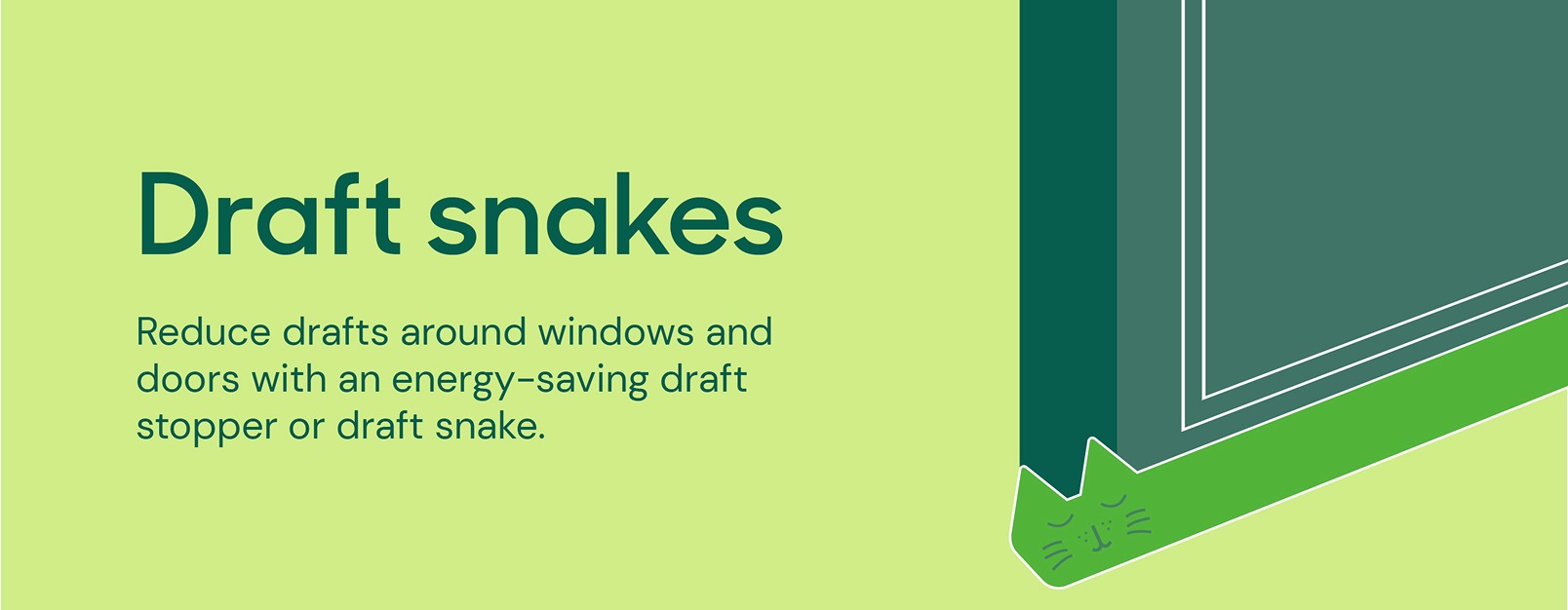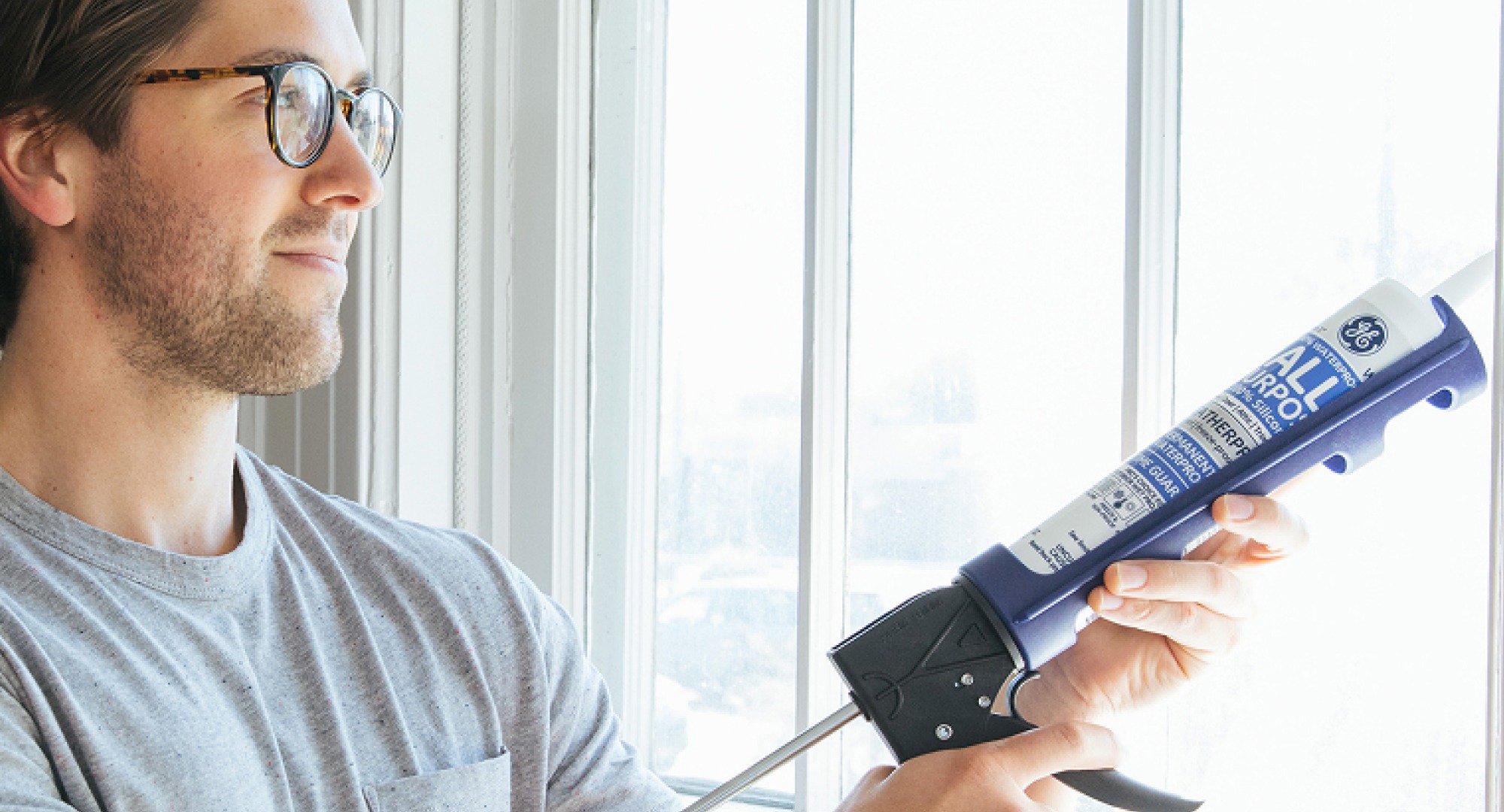7 energy efficiency tips for renters.

Here are 7 ways to stay warm and save money on utility bills (while keeping your landlord happy).
Energy efficiency for renters — and staying warm and comfortable in colder months can be tricky. As a renter, you may not be able to control your home’s insulation, heating, or windows. However, you can save money on energy bills!
Here are 7 proven energy-saving tips that are good for renters and landlords. These budget-friendly ideas will help make your rental home feel cozy and energy efficient.
1. Start with a draft check
Before you make any changes, take a few minutes to stroll through your home and feel for drafts. Here are a few common problem areas you’ll want to investigate:
- Attics and crawlspaces (and their hatches).
- Window frames, panes and sashes.
- Door jambs, sills and windows.
- Plumbing and electrical penetrations.
- Dishwasher and refrigerator connections.
- Baseboards and where walls meet the ceiling.
- Electrical outlets and vent registers.
- Recessed lights, vents and fans.

You can either use the “damp hand” or “incense trick” to test for drafts. For the first option, run your hand under cold water and then hover it slowly around the problem areas mentioned above. Or, you can light a stick of your favorite incense and hold it near the problem areas mentioned above. If the smoke wavers or pulls, you’ll have found a leak.
2. “Seal and peel” or make your own “draft snake.”
Doors and windows are two of the biggest air leak offenders. Fortunately, they’re also pretty easy to tame.
If your landlord doesn’t want to install new windows or permanent weather stripping, you can use a removable “seal and peel” caulk. This caulk makes a temporary, airtight seal around leaky windows and doors. You can easily apply it and remove it without damaging paint or door surfaces.
And whether you’re feeling quick or crafty, you can create your own draft stopper — or “draft snake” for window sills, baseboards and doors. A rolled-up towel works great if you’re in the quick camp. If you’re the crafty type, spend a few moments searching for inspiration.

3. Seal your panes with shrink window film.
Single-pane windows are common in older rental homes and apartments. They can let a lot of warm air escape and cold air come in.
That’s where seal and shrink window film comes in. Most kits include double-sided, removable tape. To complete the job, you only need scissors and a hair dryer. These kits use clear plastic film that you tape around the window frame, cut to size and shrink tight with a hair dryer.
The film improves energy efficiency by reducing drafts. Plus the kits are easy on paint and even easier to remove in spring when you feel like flinging your windows open.
If you’re not up for installing film, thermal curtains or layered drapes can also help reduce heat loss — especially at night. Just be sure to open them during the day to let sunlight warm your space naturally.
4. Plug up outlet and switch leaks
You might be surprised, but cold air can come in through gaps around electrical outlets and light switches. This is especially true for outlets on outside walls.
You can block this airflow with foam outlet insulation gaskets or socket sealers. They’re super easy to install and cost just a few dollars per pack. Simply unscrew the outlet cover, place the gasket behind it, and screw the cover back on.
Looking for FREE outlet insulators? They’re included in your free energy-saving kit when you complete a free DIY Home Energy Assessment.

5. Put a blanket on … your floor.
If your home has hardwood flooring, a quick way to insulate (and keep your tootsies warm) is by placing area rugs in high-traffic or frequently used areas like your living room or bedroom. Think of them as a cozy blanket for your floors.
Not only do area rugs help your feet stay warm, but they can also help reduce heat loss through the floor — especially if your rental is above an unheated crawlspace or basement.
6. Take it down a degree or two.
If your home has a smart or programmable thermostat, be sure to take advantage of it. If they don’t, talk to them about installing a smart thermostat, which can help reduce energy costs even more. Some local power companies may even offer incentives on purchasing a new smart thermostat.
You can layer up and set your thermostat to 68° F. You can even set it lower when you are away or cozy under quilts in the evening. If that feels too cool, try to set your thermostat just a degree or two cooler than you might consider your ideal temperature.

If your space has room-specific heaters, close doors and heat only the rooms you use most often.
7. Take a FREE DIY home energy assessment.
Discover all the ways your rented home is using (or losing) energy with our free DIY Home Energy Assessment. Plus, you’ll receive an energy-saving kit and a $10 home improvement store gift card in the mail within four to six weeks.
Looking for more great ways to save on energy costs? Be sure to check out this article for more no-cost tips.



